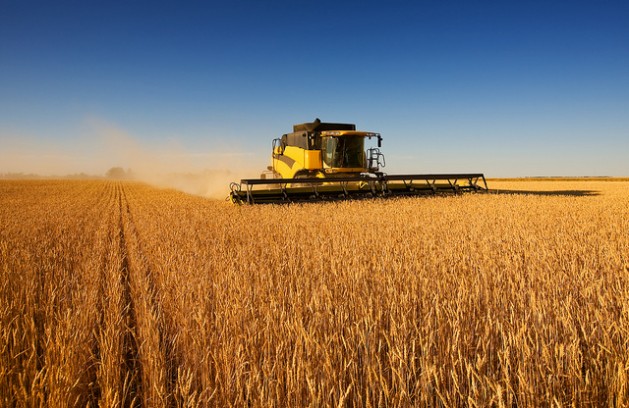Diversify American Cropping and Food Systems

The time is ripe to transform American agriculture from monoculture heavy farming and food systems to diversified cropping and food systems with a variety of crops including specialty crops. Credit: Bigstock.
URBANA, Illinois, USA, Sep 8 2023 (IPS) - A few weeks ago, my husband and I drove from Illinois to Iowa to visit a friend. I was excited about my over 5 hours’ drive. Sadly, 60 minutes into the drive, my excitement fiddled out. I was bored. Field after field, as far as my eyes could see, all I saw was either corn or soybean. I also noticed that the field margins were empty-with no sight of wildflowers.
Unfortunately, growing singular crop species, also known as monocropping, in which, all plants are genetically similar or identical over vast acres of land, is prevalent across the U.S. Midwest and North America because of current problematic policies that incentivizes the overproduction of crops such as corn, soybeans, cotton and wheat.
In 2023, for example, over 90 million of acres of corn and 82 million acres of soybean are being grown, accounting for almost over 70% of the planted farmland in the United States according to the United States Department of Agriculture.
In 2023, for example, over 90 million of acres of corn and 82 million acres of soybean are being grown, accounting for almost over 70% of the planted farmland in the United States according to the United States Department of Agriculture
Not only has this system resulted into the overproduction of a few crop species, it has also resulted in a biodiversity loss including a reduction in insect diversity.
In addition, monoculture cropping systems have led to increases of many unsustainable and environmental damaging practices by farmers including the use of pesticides and fertilizers. Furthermore, monocropping contributes to pollinators death and reduces the biodiversity of soil dwelling microorganisms, including beneficial soil microbes that underpin soil and crop health while harming the U.S. waterways. Undoubtedly, the current monocropping agricultural system prevalent in North America is unsustainable.
The time is ripe to diversify U.S. Midwest farms and farms across America. Diversified agriculture and farming systems are a set of methods and tools developed to produce food sustainably by leveraging ecological diversity at plot, field and landscape scales.
There are several strategies including incorporating diverse crop rotations, intercropping, cover cropping, and agroforestry.
Indeed, the time is ripe to transform American agriculture from monoculture heavy farming and food systems to diversified cropping and food systems with a variety of crops including specialty crops. The time is ripe to consider planting pollinator strips and filling the field margins with wildflowers. There are many benefits that can emerge if American agriculture were to diversify.
First, there is long-term evidence that shows that diversifying crop systems can increase agricultural resilience to the extremities and disturbances that come along with a changing climate including drought, heat waves, insect pest outbreaks and flooding.
Second, diversified cropping systems can improve soil fertility and soil health, lower pressure of pests and weeds.
Third, diversified agroecosystems will also become home to biologically diversified species including insect species that predate on insect pests. This will ultimately become a strategy to reduce the usage of harmful pesticides and support sustainable insect control.
Indeed, recent scientific evidence reaffirms that diversification promotes multiple ecosystem services including pollination, pest control and water regulation without compromising yields.
There is glimmer of hope that a wave of change is beginning.
Several agencies, including Sustainable Agriculture Research and Education (SARE), the US Forest Service, National Sustainable Agriculture Coalition, are promoting different crop diversification strategies and highlighting the benefits that come with cropping systems diversification.
According to SARE, for example, diversifying cropping systems can lead to many benefits including spreading farmers economic risks, exploiting profitable niche markets and creating new industries based on agriculture that can make communities competitive while strengthening and enhancing quality of life, and ultimately, aid the domestic economy.
It is encouraging that research funding agencies such as the United States Department of Agriculture are funding research aiming to diversify cropping systems in the Midwest and across America. Purdue University, for example, was awarded a $10 million grant to diversify the Corn Belt. Corteva recently posted a call for proposals that propose novel solutions to enable intercropping practices for agricultural intensification.
Complementing funding is the beginning of curation of datasets and comprehensive meta-analysis studies documenting outcomes of diversified farming practices including for biodiversity, yields, and economic returns.
These datasets that also showcase diversification as a pathway to more sustainable agricultural production serve as a resource for researchers, farmers, and practitioners since they pinpoint where diversified systems have effectively contributed to sustainable food production outcomes without compromising the economic returns.
Of course, to facilitate the shift in paradigm from monocropping to diversified cropping systems, we must confront the barriers to cropping system diversification including lack of equipment to facilitate farming of other crops and lack of a niche market for alternative crops.
At the root of this wave of change is the need to change the agricultural policies to promote diversified farming. Removing commodity crop subsides and reallocating the money to farms that practice diversified farming is one strategy that can accomplish this.
Changing these systems will take everyone including farmers, legislators, scientists, and advocates.
Diversifying America’s cropping and food systems is critical to meeting American food security needs and strengthening it in the face of climate change. Diversifying American agriculture will also help in keeping America as a model country to be emulated. It is a win-win for everyone.
- ADVERTISEMENTADVERTISEMENT


IPS Daily Report







